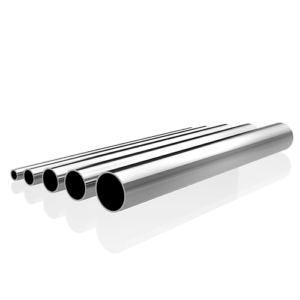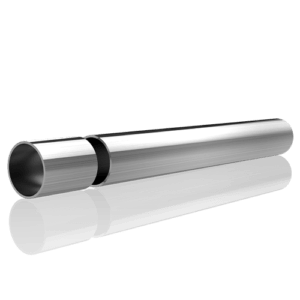Introduction

In today’s era of heightened environmental awareness, the choice between materials such as stainless steel and plastic can have profound implications for sustainability. This blog delves into the environmental advantages of selecting stainless steel 304 tubes over their plastic counterparts. By examining factors like lifecycle analysis, recyclability, durability, and specific industry applications, we highlight why stainless steel emerges as a superior eco-friendly option.
The Rise of Stainless Steel 304 Tubes
Stainless steel 304, recognized for its robustness and resistance to corrosion, has gained prominence in diverse sectors ranging from construction and architecture to food processing and automotive manufacturing. Its versatility makes it an ideal choice for tubing applications where durability and longevity are paramount.
Environmental Impact Comparison: Stainless Steel vs. Plastic
Lifecycle Analysis: A Holistic Perspective
A comprehensive lifecycle analysis reveals significant environmental benefits associated with stainless steel 304 tubes. From the extraction of raw materials through manufacturing, usage, and eventual disposal or recycling, stainless steel generally exhibits lower energy consumption and reduced greenhouse gas emissions compared to plastics. Moreover, stainless steel’s long service life minimizes the frequency of replacements, further lowering its environmental footprint.
Recyclability and Reusability: Closing the Loop
Stainless steel 304 is highly recyclable, with an estimated recycling rate exceeding 90%. This high recyclability not only conserves natural resources but also reduces waste disposal and landfill contributions. In contrast, many types of plastics face challenges in recycling due to their diverse chemical compositions and limited market demand for recycled plastic materials.
Environmental Benefits of Stainless Steel 304 Tubes
Durability and Longevity: Sustainable Solutions
One of the most compelling advantages of stainless steel 304 tubes is their exceptional durability and longevity. These tubes can withstand harsh environments, resist corrosion, and maintain structural integrity over extended periods. As a result, they reduce the need for frequent replacements and repairs, thereby conserving materials and reducing overall waste generation.
Resistance to Corrosion and Chemicals: Ensuring Reliability
Stainless steel 304’s inherent resistance to corrosion and various chemicals makes it indispensable in industries requiring robust and reliable tubing solutions. This resistance prolongs operational lifespans and enhances safety, particularly in applications exposed to corrosive substances or severe weather conditions.
Case Studies and Real-World Applications
Case Study: Construction Industry
The construction sector benefits immensely from stainless steel 304 tubes due to their structural integrity and resistance to environmental elements. Projects leveraging stainless steel tubing demonstrate reduced maintenance costs and enhanced sustainability metrics compared to traditional plastic alternatives.
Case Study: Automotive Sector
In the automotive industry, stainless steel 304 tubes play a crucial role in exhaust systems, fuel lines, and structural components. Their durability and heat resistance contribute to improved vehicle performance and longevity, aligning with automotive manufacturers’ sustainability goals.
Lifecycle Comparison of Stainless Steel 304 vs. Plastic
| Lifecycle Stage | Stainless Steel 304 | Plastic |
|---|---|---|
| Raw Material Extraction | Moderate energy, high recyclability | High energy, low recyclability |
| Manufacturing | Energy-intensive, but durable | Energy-intensive, short lifespan |
| Use Phase | Long lifespan, low maintenance | Short lifespan, potential for leakage |
| End-of-Life | Highly recyclable, minimal waste | Limited recyclability, landfill waste |
Conclusion: Embracing Sustainability with Stainless Steel

The environmental benefits of stainless steel 304 tubes underscore their role as a sustainable alternative to plastic tubing. From lifecycle advantages and recyclability to durability and specific industry applications, stainless steel offers a holistic solution that reduces environmental impact across various sectors. By prioritizing materials with superior environmental credentials, industries can contribute to a greener future and mitigate ecological challenges posed by plastic waste.
Conclusion
Stainless steel 304 tubes represent a sustainable choice across industries seeking durable, environmentally responsible tubing solutions. Their recyclability, durability, and lifecycle advantages make them pivotal in reducing environmental impact and promoting a circular economy. By embracing stainless steel over plastic, industries and consumers alike contribute to sustainable practices that safeguard natural resources and mitigate ecological harm.
FAQ
Q: Is stainless steel 304 environmentally friendly?
A:Yes, stainless steel 304 is environmentally friendly due to its recyclability, durability, and long lifespan, which reduce overall environmental impact compared to plastics.
Q: How does the cost of stainless steel 304 compare to plastic?
A:While initial costs may vary, stainless steel’s durability often leads to lower lifecycle costs compared to plastics, which require more frequent replacements.
Q: Can stainless steel 304 tubes replace plastic in all applications?
A:Stainless steel 304 is suitable for many applications traditionally using plastic, although specific factors such as weight, cost, and design considerations may influence material selection.
